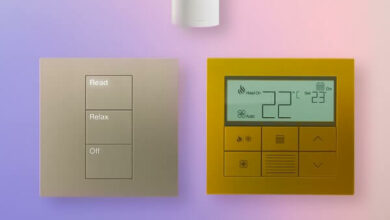Augmented Reality Made Wearable: Top Smart Glasses for Immersive Experiences

AR technology superimposes digital information, graphics, and virtual objects in the natural world.
It enables the users to feel and touch the virtual content in the air without requiring a separate screen or equipment. AR creates the perfect virtual and real combination by making the environment’s perception more attractive.
If you are new to the Smart glasses sector, you may not realise they are called various things all relating to the same things, such as:
- AR Glasses
- AR Wearables
- And Augmented Reality Glasses…
So, hopefully, that clears things up if you are confused. And with the growing trend and push from many major manufacturers for AR, they are getting popular and starting to fly off the shelves.
The main characteristics are that they come complete with either a display or computer screen directly in front of your eye and deliver data using AR.
Naturally, there are different models and different levels of tech represented by the cost. At the higher end of the market, you’ll get more sophisticated tech like:
- Gesture Recognition
- Spatial Audio
- Eye Tracking
- Voice Control and more…
The wearables carry a computer screen or display in front of a person’s eyes and utilise augmented reality (AR) to present the data. More sophisticated smart glasses contain features such as voice control, gesture recognition, eye tracking, and spatial audio.
What we are going to do in this article is focus on giving you an overall view of the sector, what’s involved and a few pros and cons of four of the most popular brands currently on the market. So, let’s get cracking!
Smart glasses can be used for various purposes: entertainment, learning, gaming, navigating, social networking, etc.
They are a powerful resource for professionals who want to reshape their work, communicate and produce. For instance, smart glasses facilitate remote access, non-manual operation, instantaneous guidance, and immersive design.
However, with numerous smart glasses and AR specs, how do you select the right one? In 2024, the following are some of the best smart glasses to purchase, together with their benefits and limitations.
Meta/Ray-Ban Stories
Meta, who was the main champion of AR and has been in intensive R&D for years, partnered with Ray-Ban to produce the Meta/Ray-Ban Stories.
What they came up with is some pretty cool-looking AR shades that look almost like a pair of Ray-Ban’s – BONUS!
These AR wearables also help you take pictures and shoot videos, listen to music, make phone calls, and access Meta’s social networks with a touch or a voice command. The company also offers a buddy app for editing and sharing your content.
Pros:
• Elegant and trendy design.
• User friendly and manageable.
• High audio quality and battery life.
• Compatible with Meta environment.
Cons:
• No AR display or features.
• Limited resolution camera and storage.
• Better security features would be a bonus
Microsoft HoloLens 2
HoloLens 2 from Microsoft is one of the best AR wearables available, and it provides a very interactive and collaborative experience.
It provides a see-through display that casts holograms into your field of view, which can be manipulated via your hands, eyes, and voice.
It also has sensors that map your environment and monitor your movements, making your surroundings more natural and accurate. HoloLens 2 is an enterprise and industrial applications device for example, training, education, engineering, and healthcare.
Pros:
• Superb display and holograms.
• Interaction that is natural and intuitive.
• Field surveillance and orientation.
• Strong performance and feature pendencies.
Cons:
• Cost and bigger than most models.
• Field of view and battery life are limited.
• Depends on a Windows PC or a cloud connection.
Lenovo ThinkReality A3
Lenovo has brought us a wired AR glasses set that lets you hook it up to your Smartphone or a PC. One of the quirky aspects of these is they can support five virtual monitors due to their cool dual display, so you can classify them as a productive, helpful device.
So, if you are busy and are used to multitasking, these would be right up your street.
It is also a ThinkReality software platform from Lenovo that enables AR applications and content creation and management. This makes ThinkReality A3 perfect for employees seeking a mobile and adaptable solution to their work requirements.
Pros:
• Lightweight and comfortable.
• Variable display.
• Is compatible with numerous devices and platforms.
• Affordable and accessible.
Cons:
• Wired and tethered.
• No gesture or ocular control.
• AR capabilities and functionalities are limited.
Read also: How to Get Into the Featured Snippets
Vuzix Blade Upgraded
Vuzix has hit the market with a cool heads-up and hands-free design experience.
You get plenty of features such as maps, weather, notifications and more from a very smart full-colour display.
That’s not all. It’s also equipped with a col microphone and spark, camera, and touchpad, and it’s designed to multitask for various activities and other interactions.
For those of you who use Google Assistant or Alexa, they have you covered and give you all the big-name apps, such as YouTube, Netflix, and Spotify for example.
If you are looking for something simple and practical, these should definitely be a consideration for your shopping list!
Pros:
• Compact and durable.
• Simple to configure and use.
• Supports audio and touch control.
• Supporting devices such as those that work with Android this app can work with this app.
Cons:
• Low res display and camera.
• The battery duration and space available could be improved.
• The app’s functionality can be viewed as a little limited.
Conclusion
AR wearables are a revolutionary technology that enables us to improve our reality and change our perceptions. Whether you seek fun, learning, labour, or anything else, there is a smart glass for you. Yet, when you decide to buy one, it is important to research the features such as design, performance, features, compatibility and cost. This way, you can find the right augmented reality glasses and take advantage of AR.







